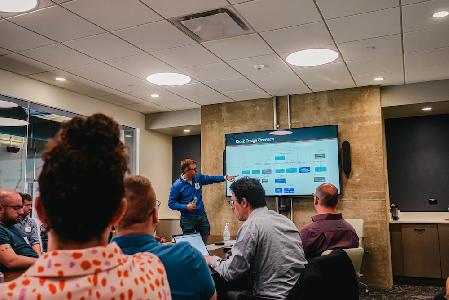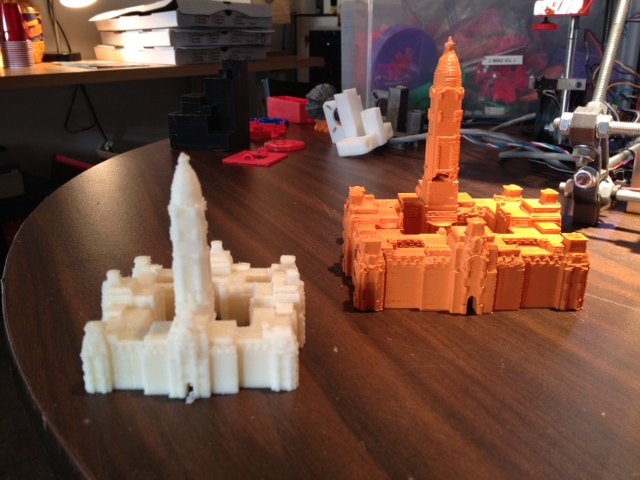Last month, Philadelphia became the first city to ban 3D-printed guns, according to a legal advisor for the Police Department. To Chris Thompson, 3D printing supervisor at NextFab Studio, it’s a “noble effort…but it’s kind of useless.”
Noble, Thompson says, because Councilman Kenyatta Johnson wanted to impact gun control but useless because the federal government already has a similar prohibition and it’s not easy to enforce. The definition is odd, too:
Three-dimensional printer. A computer-driven machine capable of producing a three-dimensional object from a digital model.
Here is more of Thompson’s perspective, which Thompson stresses does not reflect NextFab’s opinion:
“That [definition] includes the three CNC milling machines at NextFab and the laser cutters. They used the word “3D printing” to jump on some buzz words instead of “digital manufacturing” or something. So you can’t carve a gun out of metal or plastic either. It’s a short bill, and it doesn’t include anything designed to stop violence. It’s a slight waste of time in my opinion.
NextFab doesn’t have a manufacturer’s license from the ATF, the federal agency in charge of preventing the illegal manufacturing of guns, so we’re not allowed to make weapons on any of the machines. We wouldn’t if we could. NextFab’s policy prohibits employees and staff from making weapons.
Last year, local artist Peter Erickson asked us to print the frame of a Beretta. We were very cautious, made sure his exhibition was legit, and received a statement from him that it was only intended as a sculpture. And with all that, we even scaled it up 105 percent, making it useless as a weapon.
All of the 3D-printed gun models from Defense Distributed [the Texas nonprofit that developed the first 3D-printed gun] have been produced on commercial machines like the Dimension at NextFab. I quoted the pistol on NextFab’s machine and it’s quite expensive: almost $600, which could buy a real gun. The recently publicized metal printed gun has to be at least $5,000.
Defense Distributed has created a permanent gun control loophole. The 3D models they designed will not go away, and RepRaps (3D printers made out of 3D printed-pieces) will not go away, so the printed plastic gun is a reality. Like Chekhov’s gun, it’s only a matter of time before it’s used to kill someone. Also, because it’s mostly undetectable, there’s a good chance it will happen on the other side of a metal detector.”
Join the conversation!
Find news, events, jobs and people who share your interests on Technical.ly's open community Slack

Philly daily roundup: Student-made college cost app; Central High is robotics world champ; Internet subsidy expiration looms

Philly daily roundup: Earth Day glossary; Gen AI's energy cost; Biotech incubator in Horsham

Philly daily roundup: Women's health startup wins pitch; $204M for internet access; 'GamingWalls' for sports venues

